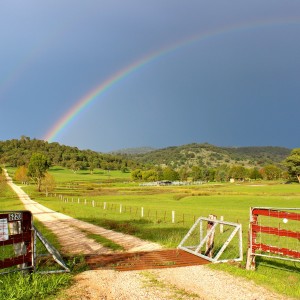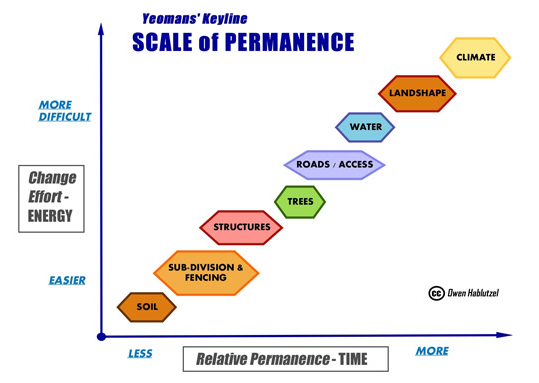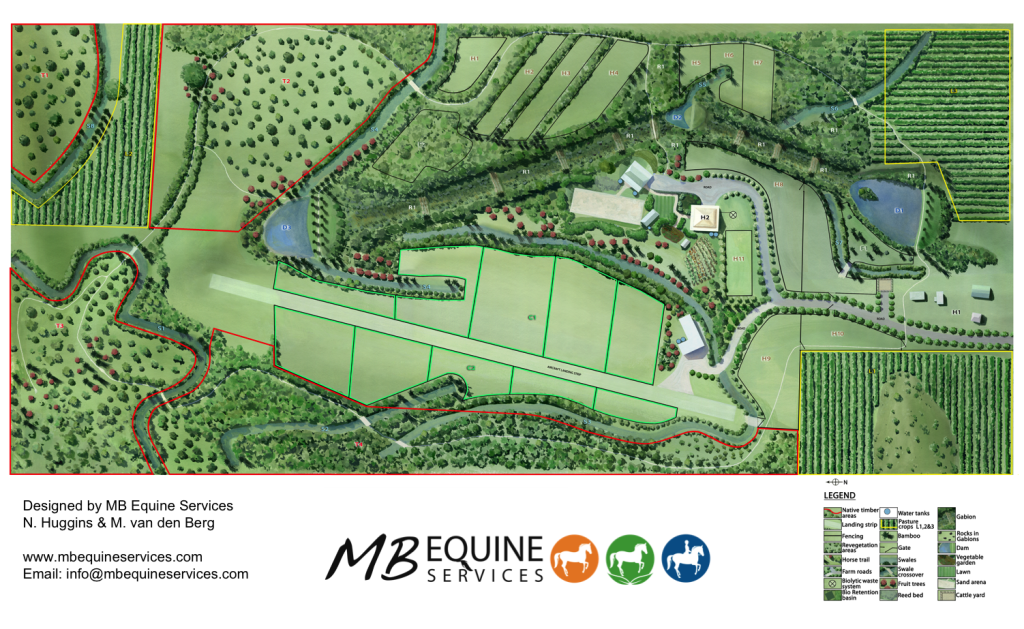Holistic Management for Horse Properties – Part 8
Land-planning and understanding landscape capabilities
Published in the Horses & People Magazine & Hoofbeats Magazine
By Mariette van den Berg, BAppSc. (Hons), MSc. (Equine Nutrition)
 In the previous section, we discussed the first planning procedure used in Holistic Management: financial planning. Having a financial plan is important for any future developments we want to make on our properties or in our horse businesses. In this section, we continue with the second planning procedure: land planning.
In the previous section, we discussed the first planning procedure used in Holistic Management: financial planning. Having a financial plan is important for any future developments we want to make on our properties or in our horse businesses. In this section, we continue with the second planning procedure: land planning.
Landscape functions
When designing horse properties, we rarely pay attention to a basic understanding of landscape function or even what our piece of land can sustain. In this section, we highlight some basic steps in how to design our properties.
Back in the 1950s, P.A. Yeomans — a mining geologist and regenerative farmer — pioneered the ‘Scale of Permanence’ in landscapes with eight factors to consider when designing farms.[1] Concurrently, he developed the Keyline Design concept on his family properties west of Sydney.
The concept of the Keyline Scale of Permanence was first published in 1958 in a book called The Challenge of Landscape. The Keyline Scale lists a new order of planning, which is based on permanence. Realistically, soil is at the bottom of the list because the development of deep, living soil is more of a goal than a constraint of design and planning. Keyline methods demonstrate that poor soil is capable of dramatic, rapid improvement to a condition of deep and living fertility. And, as history shows, good soil is also susceptible to destruction and loss even faster than a line of fence posts may rot.
The Keyline Scale of Relative Permanence:
- Climate
- Land shape
- Water
- Roads
- Trees
- Buildings
- Fencing
- Soil
The scale works on the premise that number one refers to a fixed constraint that cannot easily be changed (unless we pick up and move to a completely different environment, for example).
On the scale of eight, soil is the easiest element to create and also the easiest to destroy.
Using this scale assists us greatly in the land planning process.

Getting started with land planning
1) Gathering important information: A land plan is no better than the information that goes into it. Research is so important for holistic land planning, Keyline Design, and permaculture. We suggest seeking out people who can help put the plan together. People who participate in lending their ideas become supporters. Some of the information you need includes:
Natural issues: Zone and sector analysis, climate, rainfall, soil type, wind, fire, movement of the sun across the sky over a twelve-month period, and local plants and animals that call your place home.
Social issues: Present ownership boundaries, water rights, and how these might affect you and your neighbours.
2) Preparing maps and overlays: Hand-drawn maps from detailed contour plans and Google earth pictures are the easiest for mainframe (big picture) design. Traditionally, we consider aesthetics first rather than working through a method of design; permaculture and Keyline Designers, on the other hand, work through three important elements first (water then access then structures). Farm plans and maps are available to order from most state land departments.
3) Deciding on herd and paddock sizes: Looking over your grazing plan will give you the best information regarding how many animals you can graze at one time and what your ideal rest period will be. (We discuss holistic grazing planning and pasture management in more detail in the following sections.)
4) Designing the property: Water is the most important element that must be taken into consideration — linking hydration swales to take water to dry ridges and back-fill dams passively across the landscape for human and equine needs.
Plan access and movement around the farm with the least possible resistance. Then add in structures: houses, stables, arenas, and paddocks. We must also observe nutrient flow so that we can benefit from its movement through the landscape without having to move it.
Understand basic land shapes, and design in accordance with enhancement of the water cycle by primarily slowing the movement of water over the land. Start as high as possible by increasing the fertility and water-holding capacity of the primary valleys and ridges.
Maintain or develop productive or re-vegetation forests along the ridges and creek lines for landscape protection and to optimise nutrient or energy cycling, flows, and utilisation. Again, incorporate productive or re-vegetation forest strips and plantings with these features.
Key overlays in your design:
- Map of the future landscape as described in your holistic goal
- Wildlife interactions on your land
- Rights of way or easements
- Fire danger — prevailing winds
- Crop or timber areas
- Inaccessible areas
- Existing fences, gates, roads
- Creeks, rivers, ponds, dams, lakes
- Snowdrift areas (alpine locations)
- Flood areas
5) Implementing your plan. We suggest that you create an annual (holistic) financial plan, so that you can allocate money towards desired developments. Commonly, the cost of changeover from an old to a new layout is a major limiting factor in the rate of change. However, if adequate money is available, the rate of change need not be slow. It should nonetheless be sound and in line with your (holistic) goal in every respect.1 To effectively implement your plan, break it down into smaller achievable steps and compute the costs of each step. Then, determine the sequence in which those developments need to ‘come online’. Each year thereafter, when creating your (holistic) financial plan, decide again how much you will allocate towards the steps in the plan.
For businesses: Ideally, no costs should be incurred on any development until the development becomes a wealth-generating expense. This ensures that each dollar spent on new developments, or on moving old ones, earns more money than it spends (this applies mainly to horse businesses). Implementing your plan in a gradual way — and generating the capital to do it from the land — means that you can continue to operate at a profit year after year, and that the other needs expressed in your holistic goal continue to be met, too.
Further reading:
- Yeomans, P.A. 2008. Water For Every Farm – Yeomans Keyline Plan. 4th edition. Keyline Designs, Australia (www.keyline.com.au)
© MB Equine Services 2014
www.mbequineservices.com

Follow Us!